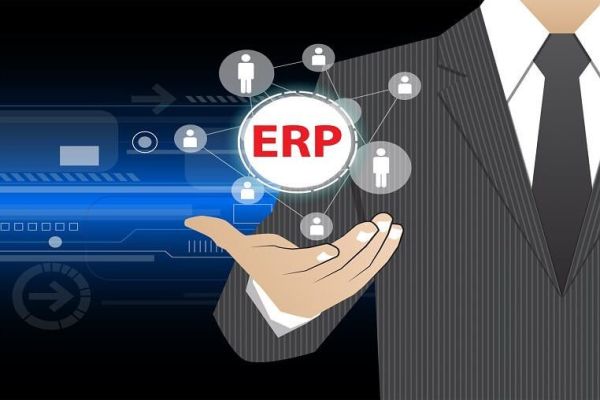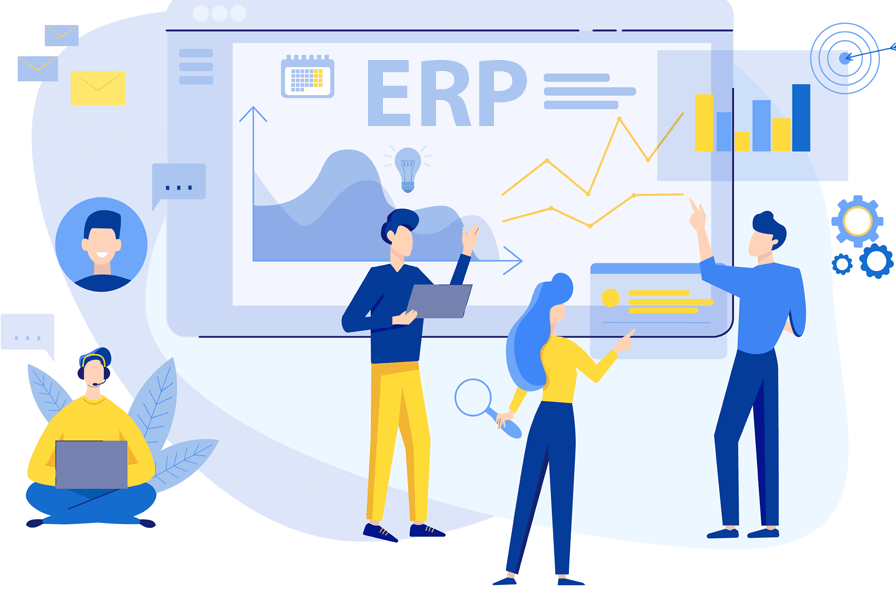Explore our library to learn more through variety of topics

How To Control The Cost Of Your ERP Implementation?
If you’re thinking of purchasing a new ERP solution, cost is a major consideration. But when you think of cost, you think in terms of the cost of the software itself and the services involved in customizing and implementing it.
You probably assume you don’t have much input on the cost; the manufacturer of the software determines the price and the implementer presents a proposal outlining the number of hours required to design a solution, make the customizations to the software, and implement it. Hourly rates are set, and the time required to execute various phases of the project generally is what it is.
That doesn’t leave much for you, the customer, to control…or does it? The reality is that there are several factors under your control that can have a significant impact on the cost of your new ERP system. Here are a few of those factors:
#1. Scope of work
Scope, or the size and complexity of the project overall, is an area filled with opportunities for cost control. First and foremost, scrutinize your system requirements. Are they all true “requirements” or are they “nice to have”? Many companies make the mistake of trying to get it all, which will increase the services required for delivery. Instead, break it down into a phased approach that can deliver some success early and will continue to do so as phases are completed.
ArcherPoint recommends starting with planning as phase “zero”, which starts with the business analysis and yields the project plan, budget, and timeline. This phase is critical because it’s the time when your stakeholders get the opportunity to come together and agree on requirements versus nice-to-haves and prioritize those requirements—and that leads to a solid, smart, cost-effective project plan, budget, and timeline.
All subsequent phases account for helping absorb change and continually improve processes as the project progresses. Phases also present the opportunity to score small victories along the way—and celebrate them, too. This keeps morale and excitement up, and the team becomes more confident with each win.
One caution: Try not to go beyond 12 months with your implementation project. At some point, human factors like employees’ ability to focus begin to impact implementations. Stay under 12 months to reduce fatigue and stay focused. If you have complex business requirements, 12 months might seem aggressive, but that's where you can adjust your scope to focus on requirements versus nice-to-haves.
#2. Timeline
Another area where you can save implementation costs is the timeline. If you try to get your new system up and running too quickly, your costs will go up. However, the same is true if you take too long. You need to find the optimal timeline. Remember that it's not when you start, it's how you finish. It’s more important to be absolutely ready than to hit an arbitrary start date. Another thing to keep in mind is which steps can be done in parallel; the implementer can be working on some tasks while you can be working on others simultaneously. Be sure to think through this and take advantage of those opportunities. See the next section, Work Sharing, for more on this.
#3. Work Sharing

Every implementation involves executing many steps. Some of those steps need to be performed by the implementation partner, others need to be performed by the customer, and still others can be performed by either. For example, the customer would review and clean up the data that is going to be moved to the new system, but the implementation provider would do the data import, including verifying and validating it is in place—then the customer would perform one final review. The two would work together, however, on the customizations. Yes, the implementer would run that task, but the customer would need to be involved to ensure the resulting customizations meet requirements.
Since an implementation is sometimes referred to as a transfer of ownership, the more work you, the customer, can do, the more money you will save. This also has a powerful secondary impact on the quality of the effort; the more you know, the happier you will be at the completion of the project and with its outcome.
Other areas in which the implementer should be involved with include:
- Developing the training plan and materials; executing the training
- Creating a plan for system and integration testing
- Putting the system into production; being available for issues and questions
Areas the customer should be in charge of (or at least very committed to) include:
- Data cleanup and verification
- Data formatting and cleansing imports
- Training (setting aside the time!)
- System testing
Go live! Avoid distractions because this is an important yet risky time because the business needs to keep running without interruption
This is not a hard and fast list, but a general recommendation. For example, depending on the project and the internal knowledge of the software, you might be able to manage the training internally. You would have a small group trained by the implementer, and that group would then train the rest of the staff.
Another example is around system interface. If you have a hardware interface that needs to be imported or interfaced to the ERP system, it would typically involve some kind of process automation and mapping, and you might have an internal resource that can handle it, which will save costs.
#4. The Right People
Having an implementation team with the right people is very important. Not having the right people can cost you money, and the right people can save you money. Here are some tips:
Include people that have the right skills first and foremost. They need to represent the entire business. In addition, they need to be excited about a change, willing to work hard, and accept all the challenges that come with that change. You cannot afford to have people on your team who put up resistance when you run into obstacles. There needs to be a real determination to cut through those as quickly as you can.
Include people from both sides—a combination of representatives from the implementer and your company.
Select a project manager—typically from the implementer—who is positive, a good communicator who listens, will take responsibility, and can keep the team on task.
Once the system goes live, the project is technically not over yet, so the team needs a source of support to get the project completely buttoned up.
#5. The Right Partner

The key to a successful ERP implementation is selecting the right implementation partner. While they might not be the cheapest and don’t appear to save you money on the surface, the best partners are efficient, experienced, and know how to execute a successful project from day one. In the long run, that will save you money. In addition, good partners look for ways to save you money because they want you to get the best bang for your buck. They will also prevent you from making decisions that could cost you money—including cautioning you about cutting corners that could hurt. Put as much time and effort into selecting a partner as you do in selecting your ERP system, and you’ll be in good hands.
Don’t Risk A Failed Implementation By Trying to Save Costs
There are plenty of opportunities to control the costs of your ERP project—but the key is to do it responsibly. If you cut costs in the wrong places, you could be facing a failed implementation. If you pay attention to the scope, thinking critically about your requirements, you’ll be well on your way to saving on costs.
To talk about other considerations when making your ERP purchasing decision, contact Naviworld. Our experts will help your company implement the right ERP solution.
** Hotline: 092 636 2468
** Email: info@naviworld.com.vn
** Fanpage: NaviWorldVietnam
Ready to get going?
Ready to get going?
Please share your contact informations below to allow one of our expert to contact you.
About NaviWorld
NaviWorld Vietnam is a leading solutions provider of end-to-end integrated and adaptable business management solutions for mid-sized companies in Vietnam and South East Asia. With solutions catering for various sectors from Distribution to Retail, Services to Manufacturing, NaviWorld brings a portfolio of internationally proven, fully integrated technology business solutions to our customers.
Solutions
Contact Us
Ha Noi
-
11th Floor, 41 Hai Ba Trung Street, Hoan Kiem District, HN
-
Tel: +8424-3636 6268
Ho Chi Minh
- 13P Floor, 2BIS Nguyen Thi Minh Khai St., Dist. 1, HCM City
- Tel: +8428-3840 3177